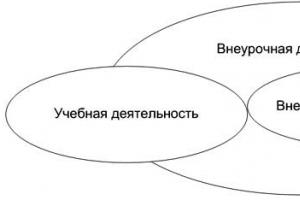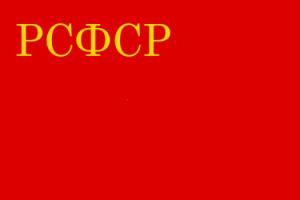The key to your success is a well-designed schedule and house rules. Moreover, this applies not only to the work space, but also to your private life. You shouldn’t take the article as the truth in the first instance, but it still wouldn’t hurt to listen to our recommendations: everything has been tested on yourself.
Making a daily routine: unshakable rules
So where does order in your day begin? Of course, from the structure and understanding of all future affairs. Spend a few minutes planning, an integral part of creating a to-do list. In this difficult undertaking, rely on the following few rules:
- When creating a to-do list, consider the “Frog” rule. A frog is a task that you don’t want to do, but really need to do. So put this task at the very beginning of your day - start with it. Then, during the next working hours, you will be able to devote more time to creative tasks, and nothing will hang over your soul.
- You should spend 5 minutes morning and evening making a to-do list. We woke up, drank coffee and opened our diary - this is what the morning of a productive person looks like. Write down by the hour all your tasks for the coming day, and then calmly begin to follow the plan. The same thing before going to bed - plan out the whole tomorrow evening, and in the morning make changes depending on the state of things.
- No more than 4 important things a day! And this is not the last limitation for your results.
- Set aside no more than an hour for each important task. If the duration of a task is predicted to be more than 1 hour, then it should be divided into subtasks - smaller tasks leading to the achievement of the main goal. And again: no more than 1 hour for each task!
- Leave an extra 15 minutes for each task in case you get behind schedule. Somewhere these 15 minutes will be used, but somewhere they will not be useful. The result will be a temporary balance, which is what each of us strives for.
Our manual on how to properly create a daily routine begins with these rules. But besides planning, what else will be useful to us?

Time management basics for your day
Are you afraid of this word? Calmly! Time management- this is not a wolf, but there are still similarities with the beast: it is merciless, because it is control over our main resource in life - time.
Large companies have recently begun to create positions of time managers who are responsible for optimizing employees' working time. Now do you understand why we need this? With the help of time management, you will not only learn how to plan wisely, but also how to use your free time.
Rule 1. Concentrate on one specific task. Don't let anyone or anything distract you from the thing you're working on at the moment.
Rule 2. You already know how to properly create a daily routine. Now it's time to get to work! Follow your plan strictly.
Rule 3. It's time to draw up some rules for the internal routine of your life. This may apply to both work and personal life - it doesn’t matter, the main thing is to follow them flawlessly.
Rule 4. Choose a time management technique that suits you. Experts have formulated several very interesting and working hypotheses that will help you solve problems. Now I’ll briefly talk about some of them, and as soon as you find one that suits you (focus on productivity), add it to your rules.

Time management methods: looking for the right one
To list and talk even briefly about each of the existing methods is an empty exercise. I will outline the most popular and, in my opinion, effective ones, but it’s up to you to decide. So, which method should you choose to create your house rules?

Time management is rightfully considered one of the most important skills of a modern business person. By effectively managing time, we significantly increase personal productivity, achieve all our goals and become true masters of our lives. This article brings to your attention several working ways to increase productivity with the help of competent time management . So, let's look at them in more detail.
The essence of this well-known time management method is to divide all upcoming tasks into 4 categories: A (most important and urgent), B (important but not too urgent), C (urgent but less important) and D (minor and non-urgent). Time management using a similar scheme has repeatedly proven its effectiveness, but it also requires some experience.
At first, you may misjudge the importance/urgency of certain tasks, immediately adding them to section A or B. Thus, you can overload these categories compared to the rest. However, once you figure it out and get the hang of it, you will begin to quickly and accurately set your priorities, significantly increasing your personal productivity and academic performance.
- Mind maps
This is a universal method of processing and structuring information, which is also great for time management . It is based on a tree diagram, which can include tasks, goals, ideas, resources or any other data. Its structure is considered to be much more efficient and easier to understand than traditional linear lists, tables or outlines.
Mind maps are a powerful planning tool that helps you quickly and easily develop plans for the week, month, year, or any other period of time. In addition, this method is suitable for preparing any large-scale projects (for example, business plans), allowing you to describe in detail all the important details and their relationship with each other. Mind maps are a very simple method. time management , they can be compiled both on a regular sheet of paper and in digital form, using specialized Internet services.

This time management system is a pyramid consisting of 6 successive steps. At its top is a daily plan (it must be drawn up daily), below it is a short-term plan for a week/month, then a long-term plan for a year or several years. The three basic steps of the pyramid are large-scale planning, which includes a master plan for achieving a current goal, a global goal of life and key life values. Franklin's pyramid is not only a method of time management, it also performs deeper and more serious tasks, helping to shape a person's life guidelines.

- Gantt chart
Gantt chart - method time management , implemented in the form of a table, the horizontal rows of which display certain periods of time, and the vertical rows display a list of current tasks or events. The diagram indicates what period of time will be allocated for a particular project. Thus, you will be able to draw up an accurate and detailed schedule for completing any work, you will be able to effectively divide even the largest task into its component stages and control the timing of their implementation.
KickIdler
This is an innovative service that provides ample opportunities for tracking working time - both your personal and the productivity of other people (for example, company employees). KickIdler provides a completely new approach to time management using advanced technologies. The system performs comprehensive analysis of data received from the computer and produces detailed productivity reports. Using KickIdler, you can effectively and efficiently monitor how much time you and your subordinates spent on various business tasks, and how much on personal matters. This method time management has a wide range of applications, it is suitable for any business (small or large), for educational institutions and even for monitoring a home PC.
As you can see, now there are very diverse time management techniques, using them together, you will be able to achieve the best results. Experts recommend testing each exercise in practice, and then choosing among them the one (or those) that are ideal for you.
Greetings! Everyone knows that the term “time management” literally translates as “time management.” But this is not entirely correct - after all, a person does not yet know how to manage time. But we can effectively manage our affairs (and not only work ones) taking into account time constraints!
Productivity is what separates successful people from everyone else. During his life, Nicholas Roerich painted 7,000 paintings and 30 books and traveled half the world. How do you spend your irreplaceable and most valuable resource?
In my opinion, time management is a set of tricks and techniques that make it easy to deceive your own laziness. I offer personally proven time management tools!
The name is certainly funny, but the method is quite serious. 🙂 The Pomodoro tool is needed for maximum concentration. In my opinion, this is one of the most effective ways to complete any work in a short time.
What's the point?
- Clearly formulate the task you will work on
- Set a timer (possibly in the form of a tomato) for exactly 25 minutes
- Work without distractions until the beep
- Take a short break of 4-5 minutes
- Proceed to the next 25-minute segment
- After every sixth stage, take a long break of 15-20 minutes
The tool is great for solving one task that you need to fully concentrate on: writing a report, creating a website design layout, translating text from English.
Priority scheduling
The method is based on the Eisenhower matrix, which I'm talking about. It is a quadrant of four squares with two axes. The matrix is divided horizontally into “urgent” and “not urgent”, and vertically into “important” and “not important”.
Each task is assigned a priority based on two criteria (urgency and importance). There can be only four options: A, B, C, D.

How does the priority scheduling method use the Eisenhower matrix?
- Write down current tasks in columns A, B, C, D
- We complete tasks “A” (if there are any). Proper planning suggests that there should be as few “urgent and important” things as possible. Category “A” tasks can appear spontaneously throughout the day! Therefore, time for them must be reserved in advance.
- Delegate tasks from the “C” square (urgent but unimportant) to someone else. A classic example: a company manager often delegates to a personal assistant tasks like “pick up dry cleaning,” “make restaurant reservations,” or “book plane tickets.”
- Start completing tasks from the “B” square (important, but not urgent). These are the main things that require maximum time and effort.
- Tasks from square “D” (not urgent and not important) can be completed after all the others or ignored altogether. Or, as a last resort, use it as a short rest during the day.
Alps method
One of the simplest and most visual time management tools for planning your working day.
- Making a list of tasks
- Setting priorities
- We calculate the time to complete each task and the total time requirement
- We reduce the total number to 60% of the entire day
- We delegate to others everything that can be delegated.
- At the end of the day, we monitor completion and transfer everything unfulfilled to the next day

Schwab method
Bethlehem Steel President Charles Schwab once paid consultant Ivy Lee $25,000 to create this planning method.
How to use the Schwab method?
- Write down the most important tasks
- Determine the sequence and number them
- We work on solving problems in a given sequence
- Having finished working on one task, we check whether new ones have appeared and whether priorities have shifted in favor of others
- Adding new things to the list, respecting priority
- We continue to work on tasks as their importance decreases
Having tested a bunch of planning techniques and tools on myself, I realized that everything is not so simple. Some techniques absolutely did not work for me. Others gave amazing results, but... not right away. By the way, Gleb Arkhangelsky offers a bunch of working tools in his book “Time drive. How to have time to live and work".
- Choose a planner for yourself
If your day is not too busy (or you don’t like gadgets), then the ideal option is a regular paper notebook. If you constantly work at a computer, a convenient electronic planner will do. Well, if you can’t imagine your life without gadgets, then the best helpers are applications for smartphones and tablets.
- Plan your day in advance
It is better to plan the next day the night before, rather than in the morning of the “reporting” day. The same can be said about plans for the week. It is advisable to prepare them on Sunday evening, not on Monday.
- Consider force majeure
Previously, I persistently made the same mistake: I created a schedule where things went one after another without a single “window”. Within a week, I realized that constantly living in a state of deadline is a sure road to neurosis.
Firstly, some things could not be squeezed into the time I allocated to them. Secondly, during the day new tasks appeared that were not taken into account in the schedule. Thirdly, force majeure always happened a couple of times a week: a tire puncture, a terrible traffic jam on the way to a meeting, or a friend asked for help with a repair. Such unforeseen matters, as a rule, take up a lot of time and force you to radically reconsider your plans for the day.

Conclusion: leave windows for force majeure every day. If nothing “unscheduled” happened, time can be spent on:
- Rest
- Things from the “for later” category
By the way, I have long wanted to tell you about such a useful tool as “things for later.” In your planning notebook (or electronic planner), set aside a separate page.
There we write down all the “non-urgent” matters that we never get around to. We immediately divide them into three categories: “up to one hour,” “two to three hours,” and “half a day.” For example: “get your housing and communal services bills in order for the past year,” “visit the dentist for a preventive examination,” and “buy and replace a faucet in the kitchen.”
As soon as a window has unexpectedly appeared in your schedule: open your to-do list “for later” and choose something to suit your mood. In just six months, you can, without straining, redo EVERYTHING that has been accumulating for years!
What time management tools do you use? Subscribe to updates and share links to fresh posts with your friends on social networks!
In our daily lives, we all encounter planning, thinking through ideas, and implementing things and tasks. But not all of us do this effectively. After all, someone can mobilize and do 15 things in an hour, but for others it’s difficult even in a week. And sometimes it’s not even a matter of willpower, but a simple inability to organize your working time. After all, if you know what, when, why and how to do it, you will confidently achieve success.
Today you will get acquainted with the top best time management applications that are available to you in the App Store. Some of them are very cumbersome and multifunctional, and some have a very small set of options, which sometimes turns out to be more important than planning. Many apps are based on well-known theories, and some simply provide you with a to-do list as is. A project compiler, an app for students, an instiller of habits and a determiner of life values - we tried to delve into the depths of the App Store and select applications among which everyone can find an assistant in the daily organization of their tasks and plans. In the end, it’s so nice to know that your affairs are organized and everything is carefully planned.
1.2Do
Perhaps the best application available in the App Store. The number of functions in it is such that during a week of active use I still did not have time to use them all. This is a real combine for creating, tracking, and systematizing tasks. 2Do can create tasks that can be customized by geolocation, tags, people from Contacts, smart filters, actions, photos, URLs and audio. It is difficult to come up with a structure where all this would be used.The application has a huge number of calendars. All this is synchronized with built-in Calendars, and there is also support for iCloud, Dropbox, CalDAV. The ability to backup from the phone's memory or from a special e-mail allows you not to worry about the safety of data, and password protection ensures its safety.
Of course, the application supports complex, multi-level projects, with a large number of tasks, different deadlines and conditions. The application configures geolocation tags that will remind you of the need to complete a task when you enter a certain area.
The application also features intelligent search for tasks and calendars. In addition to tags, people searches and keywords, the app features patented Soundex technology that searches for words that match what you type into the search bar. This will come in handy when you don’t quite remember exactly what a specific item sounds like correctly, but it’s difficult to look for it among hundreds of cases.
No matter how it sounds, the main advantage of the application - a huge number of functions - is also its disadvantage. It’s difficult to understand all of this at first. But if you understand the philosophy of the application and customize it for yourself, it will be a full-fledged secretary-in-your-pocket.
pros:
- Huge number of functions
- Beautiful interface
- iPad/iPhone support
- Poorly Russified
- Difficult to figure out
- Not iOS 7 style
2. Chaos Control
One of the best applications, which is also free, Chaos Control, will help you manage many tasks, carefully organizing them and creating entire branches of tasks. The main menu will be greeted with four main tabs – Place of Chaos, Day Plan, Projects and Contexts. And this is perhaps the most correct classification of tasks.The Place of Chaos contains everything that you added to the application in a hurry and didn’t bother to sort out yet. There are short notes, scraps and unformed plans. It is the sorting of all these ideas that you have to do in order to carefully transfer it all into Projects - structured by folders, subtasks, with or without time frames, with custom notifications and task reminders. This is the center of the entire application.
In the “Day Plan” column you will see a list of all the things you didn’t do yesterday and that are planned for today. But the most interesting menu in terms of implementation is Contexts. You can assign a tag to each task (Office, Home, Store) and by selecting this tag, view all the tasks recorded under it. This way, when you come home, you can always look at the main to-do list at home, or see a list of products that you would like to buy in the Store. Among other things, the application implements a task search, which will be very useful if you turn your Place of Chaos into an uncontrollable garbage dump of tasks.
Pros:
- Search among all tasks
- Tree structure of tasks
- Contextual tasks
3. iStudiez Pro
An application that is perfect for all schoolchildren and students, iStudiez Pro, has a huge number of functions and actually replaces a diary. Once you set your schedule, you will never miss a lecture, seminar preparation, exam preparation, consultation with a teacher, or homework.Originally designed for students, the application will allow you to set up a huge variety of Schedules. For example, a semester at a university, a foreign language school or programming courses. At the same time, a teacher is assigned to each subject, who can either be added from Contacts or created a separate card. Subjects have their own colors, categories, icons, so after a couple of weeks of studying, looking at your Calendar, you can quickly tell which subject you will have when. In addition, you can create homework tasks, set deadlines and priority for completion, and even assign a partner with whom you will complete this task.
Not only your tasks, upcoming lectures and consultations, but also regular entries from the Calendar, such as birthdays, reminders and other entries, will always be available on the main screen. An excellent feature for elders is the ability to send the application database by email. We created a schedule, assigned all teachers, dates of exams and deadlines for taking tests - and sent them to all our classmates. All they have to do is open this database in the application and click “Save”. An indispensable application if you are studying or planning to study.
Pros:
- Sending a database by e-mail
- Calendar Integration
- Complete schedules with subjects, classrooms and teachers
- Synchronization between all devices
4. Time Drive
The Time Drive application is based on Arkhangelsky's theory of time management. The essence of the theory is the classification of all goals and objectives and daily progress along this path. According to the theory, all problems can be divided into three categories: Elephants, Frogs and Beefsteaks.Elephants are long-term tasks that require a number of small tasks - pieces of the elephant - to be completed every day. These pieces are called Beefsteaks and every day you need to “eat” at least one Beefsteak. But sometimes small, necessary, but unpleasant things arise - Frogs. The author of the technique advises “swallowing” one frog in the morning to quickly reduce the number of these pests. There is also a classification according to time frames - rigid and flexible.
The application is fully adapted to work with such tasks. The Main Goals - Elephants - will always be displayed on the main window so that you always remember what you need to strive for. On the Plan tab, you will have a specific list of tasks that must be completed: Main Goal, Frog of the Day and Beefsteak of the Day. All other goals are optional, and you can view them using the general lists. Having created a task, you can immediately assign it the status of a Frog, Beefsteak of some Elephant, or simply leave it as is.
The application has two more functions that could be useful if they were implemented at the proper level - Memoirs and Contextual Tasks.
Memoirs allow you to write down one most significant thing a day, then choose the main thing of the week, month, year and understand what is more important to you. But the mechanism has not yet been worked out and looks crude. Second – Contextual tasks. You can assign a tag to each task - for example, “Case in the Office”, and then, while in the office, view the list of cases in this place. But there are tags, but there is no way to view them in a separate list.
Thus, the application is very well implemented, it’s convenient to work with, but let’s be honest, paying 299 rubles a year for something that you can write down in a notepad is an expensive pleasure.
Pros:
- Qualitative theory
- Convenient classification of cases
- Subscription
- Underimplemented functions of Memoirs and Context tasks
5. Sooner
Sooner is a task scheduler with a very original and user-friendly interface. On the main screen of the application, you see a part of a wheel that you can rotate, and each sector of which contains tasks of a certain category. You can create, assign and delete these sectors. Each sector has regular tasks and tasks with higher priority. Each sector can be expanded, turning it into an analogue of Clear. Adding new tasks occurs with one movement - just swipe from the center of the circle to one of the sectors and enter the task.There are two modes available in the application – To Do List and Schedule. The to-do list was described above. A schedule is the transfer of all your affairs to a temporary plane. Here you can set the scope and timing of tasks, set deadlines and reminders that will be sent using Push technology.
A separate point worth mentioning is the Recommendations function. When you activate this option, the application will automatically insert tasks from the To-Do List into empty spaces in your schedule. In the settings you can specify which folders will be the source for Recommendations. As a tool for tracking actions in execution mode, the application is too overloaded, but as a task scheduler it performs its functions perfectly.
Pros:
- High-quality instructions for beginners
- Flexible scheduling options
- Inability to create subtasks
- Lack of design adaptation for iOS 7
6.Keep It Green
KIG is an application for creating and instilling the right habits. For example, you want to force yourself to get up every morning for a run, or go to the gym regularly, or quit smoking - Keep It Green will help you with all this.By launching the application and reading the short instructions, you will be taken to the main menu, where you can immediately create a habit, set the frequency of its repetition and start executing it. For example, you want to go to the gym three times a week. Create a corresponding task, and each time you complete it, swipe to the right on it. Ten days after creating the task, the application will begin collecting statistics and will display them in the form of a graph for the last thirty days.
If you complete a task efficiently and develop into a habit, the task will be green. Yellow color means that the conditions must be observed more carefully, and red means that the habit is not observed at all.
Perhaps this is all the functionality. It’s worth mentioning, however, about daily push reminders, which will unobtrusively pop up every day, requiring you to report on the completion of tasks. The problem is that you can only set one reminder, which is very inconvenient if you have a lot to do during the day, and you can forget about one of the habits at the stage of learning it.
Pros:
- Minimalist style
- Task completion statistics
- Inconvenient reminders
- Few options for customizing habit repetition frequency
7.Last Time
Last Time is an application that will allow you to keep track of events and always be aware of the last time you did something. For example, the last trip to the doctor, cleaning the sofa, car maintenance and other necessary information that is inconvenient to write down and difficult to remember.Once you've completed a quick tutorial and created an event, you can assign a category to it, set a photo, and start counting down. Now, every time you perform this action, you can reset the counter and collect statistics on your actions.
Also, for each task, you can set the exact time of completion and, when viewing statistics, see how much any action changes over time.
- Convenient display of cases
- Code lock
- Reminders to complete
8. Breaktime
When you open Breaktime, you will see a circular timer chart in the center and... that's it. The application performs one simple function - timer 2.0, so there are simply no special frills in the interface. Having gone into the settings and set the intervals of working time and rest time, you press start and the application itself begins a continuous report, alternating these two periods.When the work period ends, the application notifies you via push and signal, and starts counting down the rest time. If you need to finish a little more before the break begins, then pressing the “In a Minute” button will delay the break by the proverbial minute. In fact, the application acts as a simple time manager for the workflow and forces you to take breaks in your work so that the entire process goes more efficiently. A separate advantage is the availability of a version for iPad.
Pros:
- Simplicity of the interface
- Maintaining operating mode using a simple algorithm
We continue our review of interesting, useful and, if possible, free online assistants. Today we will talk about those services and applications that help us manage time (our own and that of our employees) and be more efficient. Let's consider both the simplest “to-do” sheets and complex systems that allow you to store documents and coordinate work with employees. After all, every service has its own user, isn’t it?
So, 15+ resources for planning and time management.
http://nowdothis.com - a minimalist service for one to-do list. Enter your list into the window, and the service prompts you to click the “Done” button after completing each task. Suitable for those who have a clear and understandable plan, and who at the same time like to tick off completed items. Not suitable for those who have a flexible schedule and a floating to-do list.
http://www.plan-your-time.com/to-do/— here you can also make your to-do list, checking off completed ones. In addition, the service calculates how much time is spent completing each task. But if you need to pause between tasks or swap tasks, the list will have to be compiled again.
http://todolist.ru is also the simplest online service for compiling several to-do lists. You can make lists several days in advance. The functionality is also quite limited - just lists, like in a paper diary, and nothing extra. But it's free.
http://todoist.com— a convenient task scheduler with an online version and for different gadgets. You can set goals and plan specific steps to achieve them. You can create joint tasks, delegate and control their execution. An interesting feature is that the service calculates the so-called “karma” - the user’s productivity. The minimum set of functions is free, you will have to pay for advanced ones, but essentially Google does the same thing for free (read on).
https://www.google.com/calendar/render is a calendar that is with you all the time, on any device – mobile or desktop, yours or someone else’s. The calendar can remind you of a planned event, not only for you, but for all participants - via email and SMS. Like other Google services, the calendar is free.
https://calendar.yandex.ru- well, you understand :)
http://miniplan.ru from the creators of Megaplan. Combines to-do lists, an electronic calendar with reminders, and a cute interactive clock where you can add your to-dos. The miniplan is free and suitable only for personal planning – that’s why it’s mini.
http://yaware.ru— online time and productivity tracking system. Suitable for those who work on the Internet. You add to the system sites that you visit for work (or not for work :)), defining them in the category of useful, useless and neutral. The system tracks how much time per day you spend on each resource and provides a report at the end of the day. In this case, only the time during which you actually work with the resource is taken into account; the system simply ignores open and unused tabs. The site offers free access to tracking your own productivity and paid packages with advanced options for tracking employee time. There are applications for smartphones.
http://motivateclock.ru- a similar program. Download and install on your computer; there is a version only for Windows. The program is free, for personal use only, there is no corporate option.
http://www.leadertask.ru is another similar service, an electronic diary that works online, on smartphones, from a computer and even from a flash drive. It also makes it possible to coordinate plans with the team, synchronize tasks on different devices, and so on. There is a free version for personal use, several paid packages, and a boxed version for corporate clients.
https://www.wunderlist.com/ru— cloud service for data storage and task distribution. This is a system of to-do lists and a set of tools for working with them. You can set tasks, divide them into subtasks, set deadlines, link tasks together, set reminders, share your tasks with other people, and so on. The service is suitable for both personal planning (free) and business purposes (for money), and is synchronized between different devices.
http://evernote.com/intl/ru/- a service that has now gained wild popularity. This is a program and web service for storing large volumes of notes, and notes can be of any format - text, images, audio, video, with attached files. In addition, the service works as a project management system, helping not just to store a bunch of information, but to organize it and, if necessary, share it. Opens everywhere - online, from computers and phones, and synchronizes your information. There is a minimal free package and paid versions with advanced functions (for example, in a paid account you can collect an entire electronic library or video library). Evernote comes with some nice supporting services, such as Skitch, which we're talking about. And if you wish, you can connect Google mail and Google calendar.
https://getpocket.com— a browser extension, similar in functionality to Evernote, but not for notes and files, but for web pages. You save all the pages that you cannot look at right now - it turns out to be a plan for reading in the future. Inside the service there is a convenient function for clearing pages of junk - advertising, unnecessary links, etc. This helps save time and read only useful content. For money, you get a search, a tagging system, and a function for creating an electronic library (if the authors of the articles you tagged decide to delete them, the articles will still remain in your pocket).
http://worksection.com- a system that combines file storage with time planning. You can save files in any format for free. For an additional fee, you get a calendar with reminders and advanced functions: timer, time tracking, finance, etc. You can also work on projects with the participation of assistants. The service allows you to set tasks and monitor their implementation, take into account the efficiency of employees’ working time, calculate costs, organize group chats, etc.








